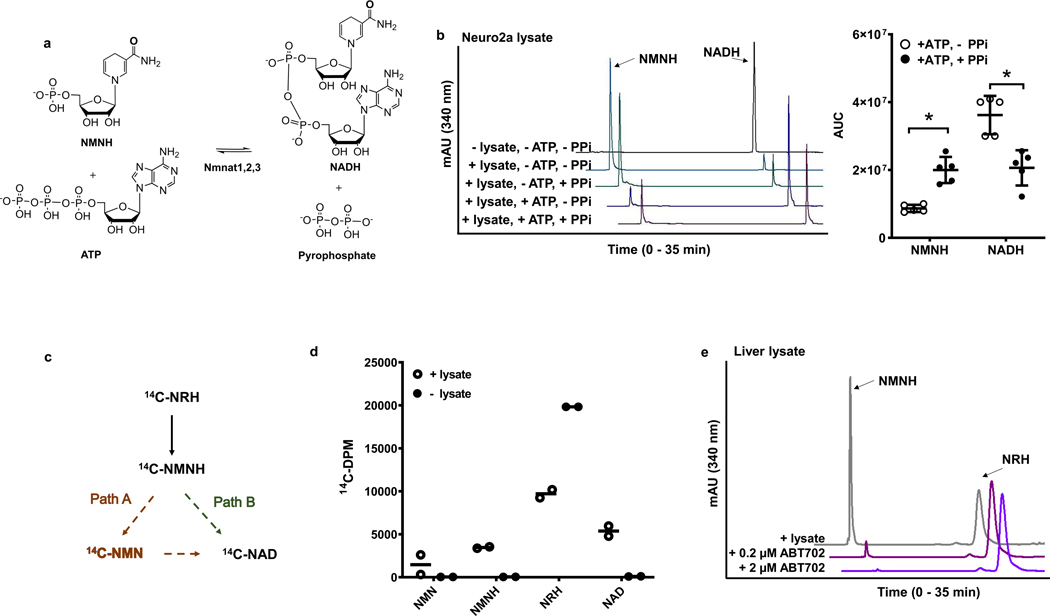Figure 7.
NMNH is a metabolite on biosynthetic pathway toward NADH and NAD+. a) Forward and reverse reactions of the interconversion of NMNH to NADH. b) NMNH is produced from NADH with Neuro2a cell lysate with and without addition of added pyrophosphate and Mg+2. = With the addition of ATP, NADH production and reduced production of NMNH occurs. Addition of 2 mM pyrophosphate (PPi) and 5 mM ATP increases NMNH production from NADH. Right panel shows area-under-curve quantifications for NMNH and NADH at 340 nm wavelength in Neuro2a lysate reactions with 2 mM NADH, 5 mM ATP/Mg2+, with or without 2 mM PPi. Data expressed as mean ± SD, n=5 biologically independent samples. *, p<0.0001 with unpaired t-test analysis. c) Putative NMNH pathways to NAD+ with NMN as an intermediate to NAD+ (Path A) and independent of NMN as an intermediate (Path B). d) Radioactive distribution of [carbonyl-14C]NMN, [carbonyl-14C]NMNH, [carbonyl-14C]NRH and [carbonyl-14C]NAD, after reaction where 50 μM [carbonyl-14C]NRH (20000 cpm) was incubated with 500 μM NMN, recombinant human AK and 2 mM ATP/Mg2+ for 30 min, then incubated with Neuro2a lysate for another 75 min. HPLC and scintillation counting as described in methods was used for quantitation. Controls is for 50 μM [carbonyl-14C]NRH (20,000 CPM) with no addition of AK and no cell lysate. n=2 independent experiments. e) Liver lysate from mouse has NRH kinase activity and this activity is inhibited by added ABT702. Experiments were repeated independently 3 times with similar results.

